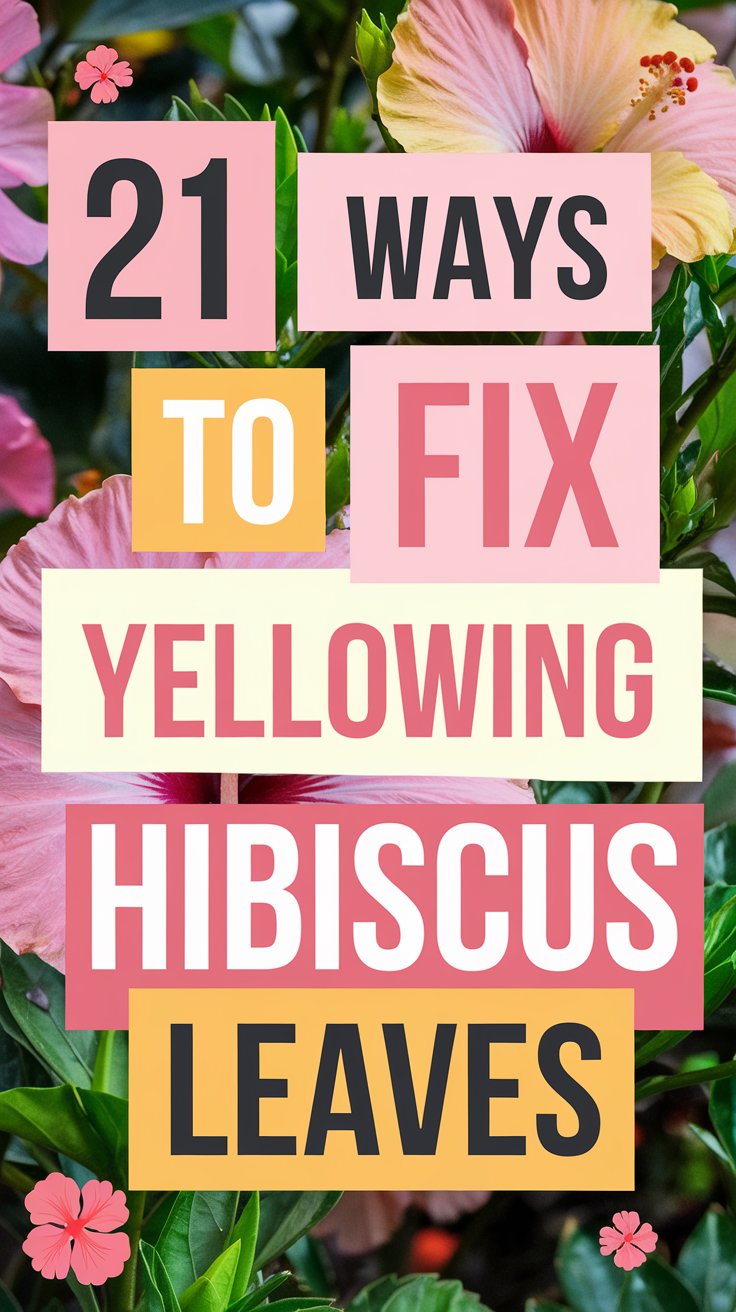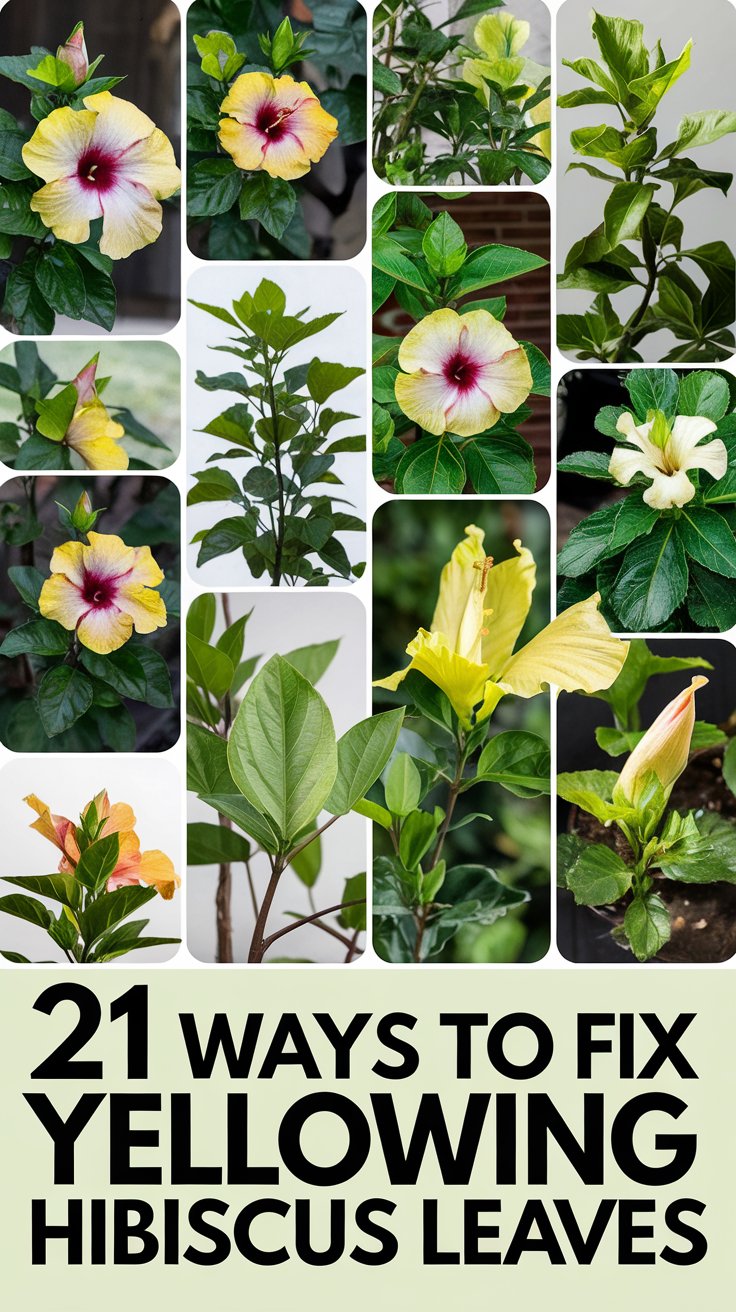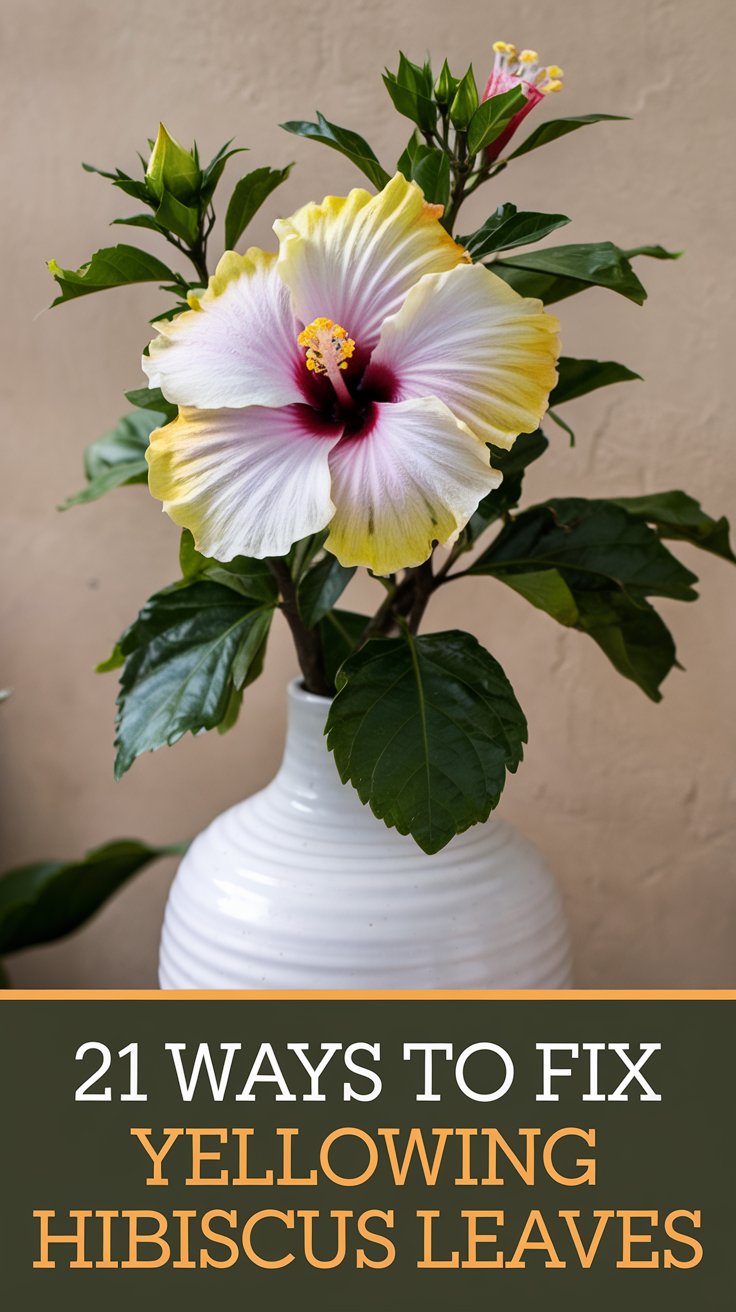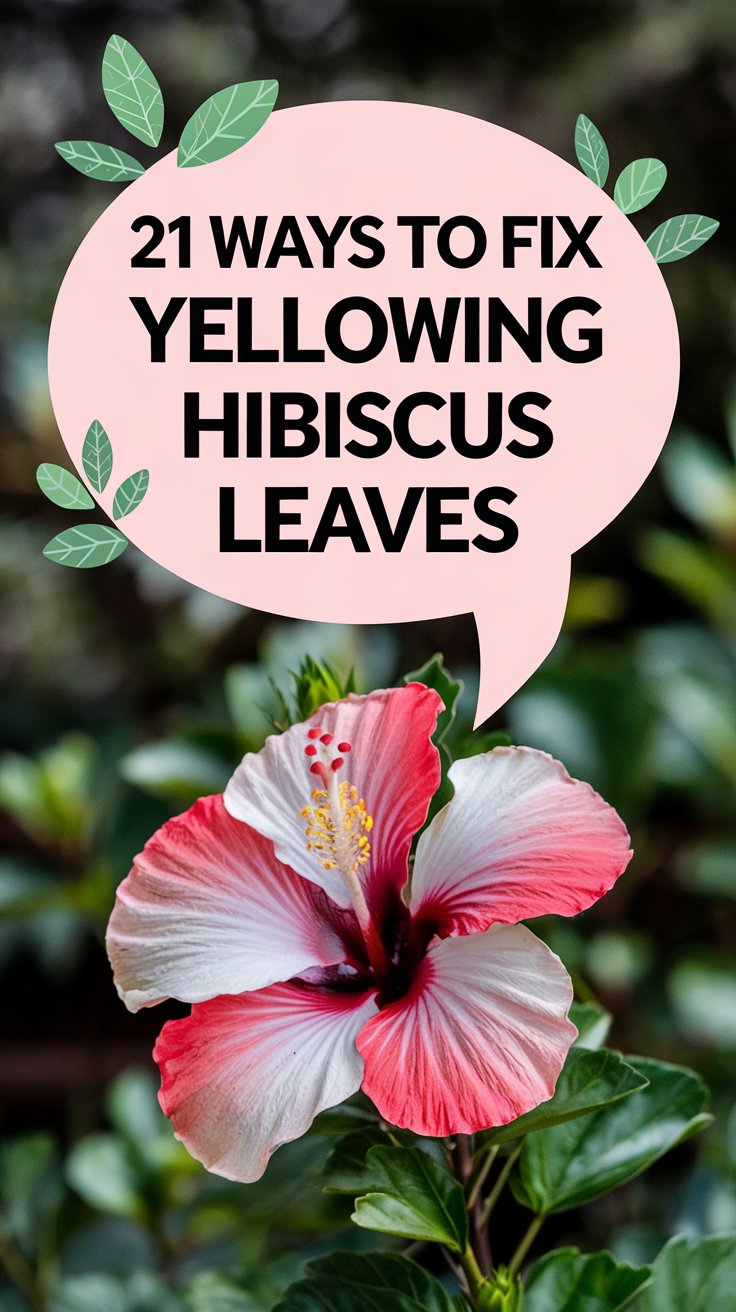Hibiscus plants are known for their stunning flowers and lush green foliage. However, one common issue that many hibiscus owners face is the yellowing of leaves. This can be a worrying sight for any gardener, as yellowing leaves could signal a variety of problems, from nutrient deficiencies to overwatering. Fortunately, there are several ways to address this issue and rejuvenate your beloved hibiscus. In this article, we will explore 21 effective methods to fix yellowing hibiscus leaves and help your plant thrive once more.
Assess Watering Routine
It’s crucial to evaluate how often and how much you water your plants. Overwatering can lead to root rot, while underwatering can hinder growth. Observe your plants for signs of distress, such as yellow leaves or wilting, and adjust your watering habits accordingly.
Check Soil Drainage
Good drainage is essential for healthy plants. Ensure that your pots have drainage holes and that the soil allows excess water to escape. You can test drainage by watering and monitoring how quickly the excess drains away. If water pools at the surface, consider repotting in a mix designed for better drainage.
Monitor Light Conditions
Different plants require varying light levels. Take time to observe where your plants are located and adjust their positions based on their lighting needs. If a plant isn’t getting enough light, consider moving it closer to a window or supplementing with grow lights.
Fertilize Properly
Using the right fertilizer at the right time can significantly impact your plants’ health. Focus on high-quality fertilizers that provide essential nutrients. Follow package instructions regarding frequency and amount, as too much fertilizer can be as harmful as too little.
Inspect for Pests
Regularly inspect your plants for signs of pests. Look for any small bugs, discoloration, or unusual spots on leaves. If you spot an infestation, identify the type of pest and treat accordingly, whether by cleaning the leaves, using insecticidal soap, or introducing beneficial insects.
Prune Damaged Leaves
Pruning is a great way to promote healthier growth. Remove any dead, damaged, or diseased leaves to prevent further stress on the plant and to encourage the growth of new foliage. Always use clean, sharp tools to make clean cuts.
Adjust Humidity Levels
Many plants thrive in high humidity, especially tropical varieties. If you live in a dry climate, consider using a humidifier, placing water trays near the plants, or misting them regularly to maintain humidity levels.
Repot if Necessary
As plants grow, they may outgrow their pots, becoming root-bound. If you notice roots emerging from drainage holes or a lack of growth, it may be time to repot. Choose a slightly larger pot and fresh soil to give your plant more room to thrive.
Address Temperature Fluctuations
Plants can be sensitive to temperature changes. Aim to keep your plant in a stable environment away from drafts, heating vents, or air conditioning units. Consistent temperatures help to reduce stress and instill a robust growth pattern.
Regularly Check Soil pH
Soil pH can affect nutrient availability. Regularly check your soil’s pH level using a testing kit. Most plants prefer a slightly acidic to neutral pH range. If adjustments are needed, consider using lime to raise pH or sulfur to lower it.
Use Epsom Salt
Epsom salt can be a helpful addition to your plant care routine. It provides magnesium and sulfate, which are essential for plant health. You can dissolve a small amount in water and use it to water your plants once a month to boost their vitality.
Limit Chemical Exposure
Be mindful of the chemicals that come into contact with your plants. Pesticides, herbicides, and even certain fertilizers can adversely affect plant health. Whenever possible, opt for organic or natural alternatives to minimize potential harm.
Choose the Right Variety
Selecting the right plant variety for your environment is key. Do some research on plants that thrive in your specific climate and conditions. Choosing varieties that are naturally suited to your environment can lead to a healthier garden.
Provide Support
As plants grow, they might require extra support to flourish. Use stakes, cages, or trellises as needed to help maintain structure and optimize growth, especially for climbing or tall plants.
Maintain Cleanliness
Keeping your plants and their environment clean can prevent a host of issues. Remove dead leaves and debris regularly to avoid attracting pests and diseases. Clean pots and tools too; this minimizes the transfer of contaminants.
Check for Disease
Stay vigilant for any signs of disease, such as spots, mold, or unusual growth patterns. At the first signs of trouble, research the issue and take appropriate action, whether that involves treating the plant or adjusting care techniques.
Feed Again at the Right Time
Fertilization can play a significant role in plant health. Take note of when to feed your plants again after the initial feeding, as the timing can vary by species and growing conditions. Use a calendar or reminder system to keep on track.
Introduce Companion Plants
Companion planting can benefit your garden in multiple ways. Certain plants enhance each other’s growth, repel pests, or attract beneficial insects. Research compatible plants to create a more healthy and dynamic garden ecosystem.
Rotate the Plant
To promote even growth, periodically rotate your plants. This allows all sides to receive equal light exposure, which is especially important for potted plants that lean towards the light source.
Avoid Root Disturbance
When handling your plants, especially during repotting or watering, be careful not to disturb the roots unnecessarily. Deep root systems are crucial for stability and nutrient absorption; minimal disturbance helps keep them healthy.
Embrace Patience
Finally, understand that plant growth takes time. Be patient with your plants, as they may not respond to care changes instantly. With consistent attention and care, you’ll see them thrive in due time.
Conclusion
Yellowing hibiscus leaves can be disheartening, but with the right approach, your plant can return to its vibrant state. By assessing watering practices, ensuring proper light and soil conditions, and regularly monitoring for pests and diseases, you can effectively address any issues your hibiscus may face. Implement these 21 methods to bring your hibiscus back to life and enjoy its stunning blooms for years to come. Remember, a healthy hibiscus not only beautifies your space but also adds a touch of nature’s brilliance to your home.










